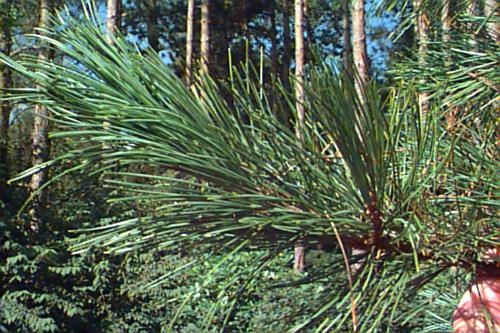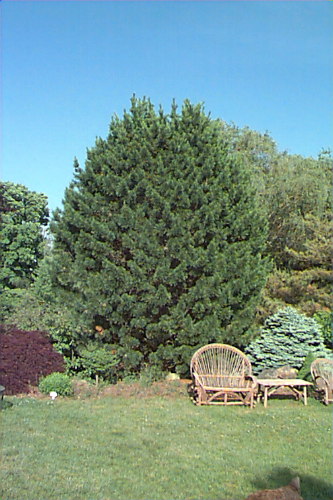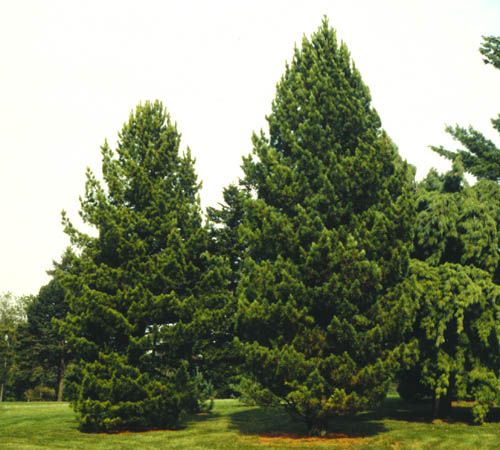Pinus cembra
Swiss Stone Pine
Pinaceae
ExpandHabitat
- native to mountains of Europe and parts of Asia
- cold hardy to zone 3
Habit and Form
- evergreen tree
- narrow dense pyramidal form when young
- more open and somewhat flat-topped with drooping branches when mature
- 25 to 35' tall by 10 to 20' wide
- medium to fine texture
- slow growth rate
Summer Foliage
- 5 needles per fasicle
- approx. 3" in length
- blue green to light green needles
- stiff, straight, dense, needles, but soft to the touch
- stomatal lines on underside of needles
- serrated margins
- needles are twisted
Autumn Foliage
- no fall color (remains green)
- needles persist up to 5 years
Flowers
- monoecious
- no ornamental value
Fruit
- violet brown cone
- ovoid to elongated oval, 3" long
- cones remain on tree after maturing, approx. 3 years
- cones remain closed
Bark
- new stems covered with orange-brown pubescence
- mature branches are dark
Culture
- prefers a well-drained, loamy soil
- plant in open areas in full sun
- transplants well
- resistant to most pests and diseases
- needs little pruning for a strong structure
Landscape Uses
- grouping or mass plantings
- good accent tree
- stays in scale to landscape for long time
- possibly as a screen because of narrow canopy, but cost/availability of multiple plants is an issue
Liabilities
- slow growth, although this can be an asset
- relatively uncommon, hard to locate
ID Features
- small to medium-sized tree
- needles in 5's, with stomatal lines on underside
- serrated margins
- new stems covered with orange-brown hairs
Propagation
- by seed, seed stratification can be benefical
Cultivars/Varieties
'Nana' - A slow-growing form, this plant features a pyramidal habit to 20' tall. Otherwise it is similar to the species. 'Pygmaea' is an even smaller form with needles tufted in congested growths.
'Columnaris' (perhaps the same as 'Chalet') - The most common form of the species, this plant has blue-green needles and a dense, narrow fastigiate form. More than one form may reside under this name.


